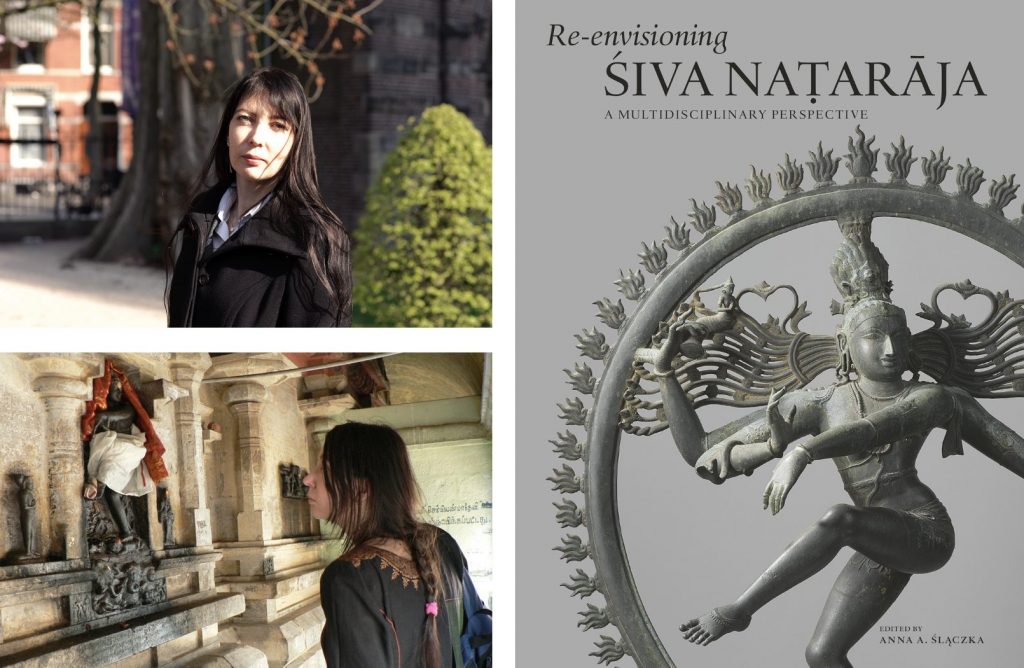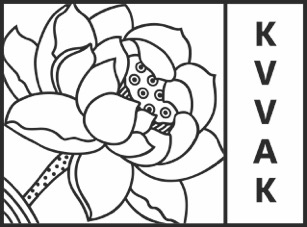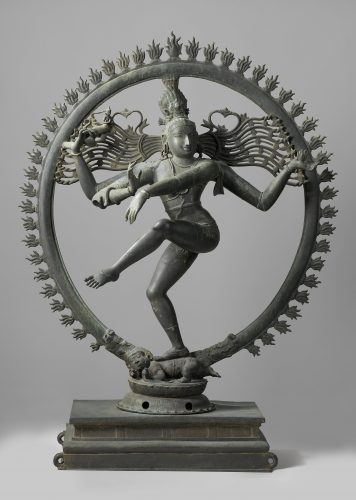
‘Let us praise the Dancer’- New Research on the Nataraja and other Asian Bronzes
The KVVAK cordially invites you to a seminar afternoon with three lectures on Asian bronzes. In recent years new research has been carried out on the bronzes in the KVVAK collection, among others. This research is now being presented to the members for the first time.
The afternoon will begin with the lecture of Sara Creange, who will talk about the neutron-based analyses of two bronzes from India in the KVVAK collection. The second speaker is Tracy Han. She will discuss the restoration of bronze objects from China. The final talk is by Anna Ślączka, curator of South Asian art Rijksmuseum, on the occasion of her latest publication, Re-envisioning Śiva Naṭarāja. A Multidisciplinary Perspective (Brill 2021), in which you can read about new art historical and textual research on the Nataraja.
We will conclude the afternoon with a Q&A session with both conservators and the curators of South and Southeast Asian art at the Rijksmuseum.
Afterwards there will be drinks in the foyer. KVVAK members can purchase the book Re-envisioning Śiva Naṭarāja during the event (and afterwards with the special discount code 72225 via brill.com). A Multidisciplinary Perspective at a 25% discount. Normally €64.31, this afternoon for €48.23. A mobile pin machine is available or a bill will be sent to you.
Program
14.30 Welcome by Menno Fitski, Head Asian Art / Head Asian Art Department Rijksmuseum
14.35 lecture Sara Creange, conservator metals / Rijksmuseum metals conservator
15.10 lecture Tracy Han, conservator metals / metals conservator Rijksmuseum
15.45 u Lecture (Dutch) Anna A. Ślaczka, curator South Asian art / curator South Asian art Rijksmuseum
16.20 u Q&A with the speakers
17.00 u Book sale and drinks in the Foyer until 17.45 hrs.
Let us praise the Dancer
Who in good Tillai’s hall dances with fire,
Who sports
Creating, destroying this heaven and earth
And all else
(Manikkavacakar: Tiruvachakam, hymn 7 verse 12; 9th century CE)
Sara Creange
Neutron-based analyses of KVVAK bronzes at the Rijksmuseum
Technical study, aiming to understand not only the condition of an object but also how it was made and altered during its lifetime, is now standard practice at the Rijksmuseum. Our study of the monumental Naṭarāja provided insights into Chola casting methods and at the same time approached the limitations of traditional methods of analysis for large solid bronzes. Advanced techniques which are less commonly used for museum objects utilize neutrons as probes. Neutrons easily penetrate massive bronzes, revealing composition and microstructures deep inside the object without destructive sampling. Based on questions about ancient bronze casting methods and concerns about long-term stability, a small group of bronzes was selected for technical study with neutrons. This presentation will explain the reasons for pursuing neutron research, show the methods that were used, and highlight results from two statues, Chandrasekhara (AK-MAK-1291) and the Standing Buddha (AK-MAK-193).
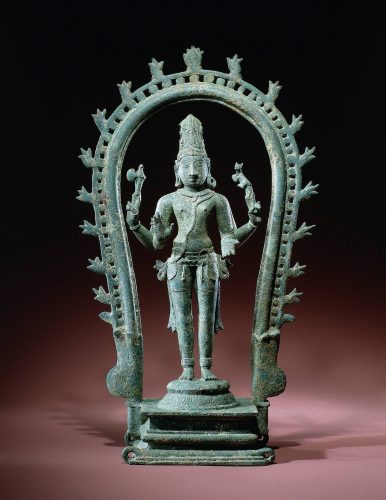
Bio
Coming from a broad background in literature and classics, Sara Creange trained in objects conservation at the Winterthur/University of Delaware Program in Art Conservation, receiving an MSc degree in 2004. Her conservation work at the Philadelphia Museum of Art and in private practice focused on outdoor sculpture, silver and preventive care of degrading glass. In 2007 she became a metals conservator at the Rijksmuseum, where her special interests include bronze statuary, enamels on metal and preventive conservation. More recently she has focused on treatment and technical study of bronzes, collaborating with scientists to investigate statuary with neutron-based techniques.

Tracy Han
Historical repairs on ancient Chinese bronzes: Identification and Conservation Issues
Traditional restoration techniques for ancient Chinese bronzes have been used since antiquity becoming particularly popular in the period from the 15th to the 19th century. Treatments such as surface patination often altered the original appearance of an object, reflecting changing historical styles and tastes in restoration in China. The challenge facing conservators who now deal with Chinese bronzes is that no technical research on traditional restoration practices in China has been carried out. This gap in the knowledge makes it difficult to conserve these objects, as there exists no reference framework for preservation or intervention. Systematic research into the methods and materials used throughout history is therefore essential. Through a survey of literary texts and a study of the objects, this project will reconstruct restoration treatments applied to these bronzes throughout history. Aging artificially the reconstructed samples will allow us observe changes in the material, and determine the preservation issues caused by old treatments. The pre- and post-aging reconstructions will form a database and reference frame to recognize the alterations of ancient Chinese bronzes and to examine the intentions behind the treatment of these historical objects.
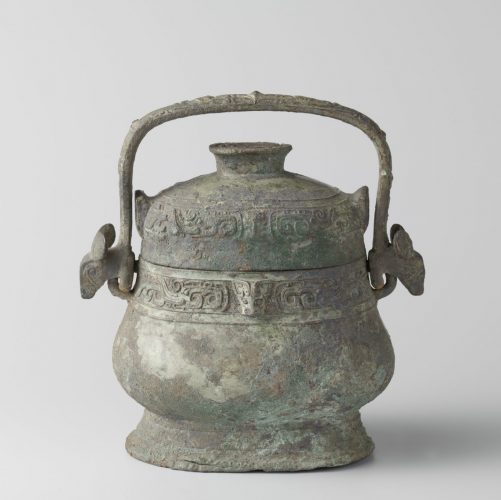
Bio
After training and working as an object conservator at the Chimei Museum in Taiwan, Ke-Shiuan Tracy Han studied at University of Amsterdam where she gained an MSc and a professional doctorate in metals conservation. During her Rijksmuseum fellowship, she will investigate the traditional bronze restoration methods and materials practiced in China to develop an identification tool to help conservators read the object and better understand the condition. Through the technical research based on the written manuscripts and existing objects combined with reconstruction of historical treatments, an essential reference behind the tool will be formed to support the decision-making process for preservation or intervention to Chinese bronzes in international collections.
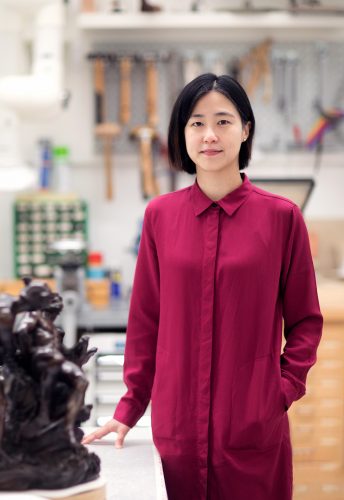
Anna A. Ślączka
New research on the Naṭarāja icon: art history, texts and technology
Although Śiva’s dance has been represented in countless ways in art, only one of them attained worldwide fame and is currently recognized as one of the most universal symbols of Hinduism. This iconographic type was created in Tamil Nadu in the late 9th or early 10th century CE and popularized during the rule of the Chola dynasty (9th–13th century CE). One of the best examples of this type is the KVVAK Naṭarāja (AK-MAK-187).
Numerous publications have been devoted to the topic of the Naṭarāja, but the icon is still not fully understood and many questions remain open. This talk presents new research on the Nataraja as published in Re-envisioning Śiva Naṭarāja. A Multidisciplinary Perspective – a multi-author volume by leading specialists on Indian iconography, Tamil and Sanskrit textual sources, and bronze casting.
Bio
Anna A. Ślączka obtained her PhD in Indology in 2006 with the thesis Temple Consecration Rituals in Ancient India: Text and Archaeology (commercial edition: Leiden, Brill 2007). She worked subsequently at the Leiden University and was an associated fellow at the International Institute for Asian Studies (IIAS) in Leiden and the École Française d’Extrême Orient in Pondicherry, India. Her research covers Hindu ritual and art, and she is currently involved in a project on production and casting technology of Chola bronzes. Among her latest publications are ‘The two iconographic chapters from the Devyāmata and the art of Bengal’ in: Dominic Goodall and Harunaga Isaacson (eds), Tantric studies: fruits of a Franco-German project on Early Tantra, Pondichéry. Institut Français de Pondichéry / École Française d’Extrême-Orient / Asien-Afrika-Institut, Universität Hamburg, 2016: 181-246; ‘An Amaravati-school pillar from the collections of the Rijksmuseum, Amsterdam and the Tokyo National Museum: style and attribution’ in: Akira Shimada and Michael Willis (eds), Amaravati: the art of an early Buddhist monument in context, London: British Museum, 2017: 89-96; and (with Sara Creange and Joosje van Bennekom) ‘Nataraja informed through text and technique: a study of the monumental Indian bronze at the Rijksmuseum’ in: Rijksmuseum Bulletin 67,1 (2019): 4-29. Since 2009 she has been attached to the Rijksmuseum in Amsterdam as curator of South Asian art.
